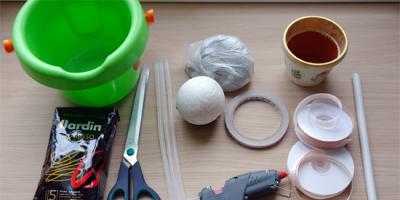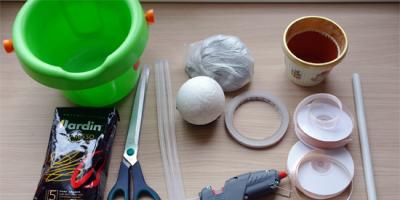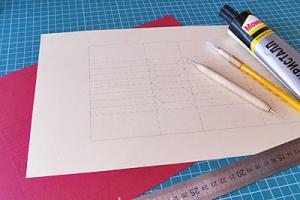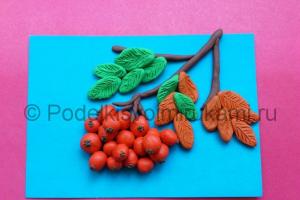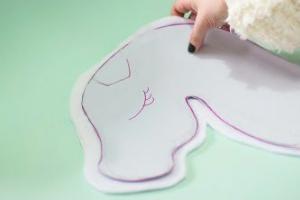When making furniture, you cannot do without curved parts. You can get them in two ways - sawing and bending. Technologically, it would seem easier to cut out a curved part than to steam, bend and then hold it for a certain time until it is completely ready. But sawing has a number of negative consequences.
First, there is a high probability of cutting fibers when working with a circular saw (this is what is used with this technology). The consequence of cutting the fibers will be a loss of strength of the part, and, as a consequence, of the entire product as a whole. Secondly, sawing technology requires more material consumption than bending technology. This is obvious and no comment is required. Third, all curved surfaces of sawn parts have end and half-end cut surfaces. This significantly affects the conditions for their further processing and finishing.
Bending allows you to avoid all these disadvantages. Of course, bending requires the presence of special equipment and devices, and this is not always possible. However, bending is also possible in a home workshop. So, what is the technology of the bending process?
The technological process for manufacturing bent parts includes hydrothermal treatment, bending of blanks and drying them after bending.
Hydrothermal treatment improves the plastic properties of wood. Plasticity is understood as the ability of a material to change its shape without destruction under the influence of external forces and to retain it after the action of the forces is eliminated. Wood acquires its best plastic properties at a humidity of 25 - 30% and a temperature in the center of the workpiece at the time of bending of approximately 100°C.
Hydrothermal treatment of wood is carried out by steaming in boilers with saturated steam. low pressure 0.02 - 0.05 MPa at a temperature of 102 - 105°C.
Since the duration of steaming is determined by the time it takes to reach a given temperature in the center of the steamed workpiece, the steaming time increases with increasing thickness of the workpiece. For example, to steam a workpiece (with an initial humidity of 30% and an initial temperature of 25 ° C) with a thickness of 25 mm to achieve a temperature in the center of the workpiece of 100 ° C, 1 hour is required, with a thickness of 35 mm - 1 hour 50 minutes.
When bending, the workpiece is placed on a tire with stops (Fig. 1), then in a mechanical or hydraulic press the workpiece together with the tire is bent to a given contour; in presses, as a rule, several workpieces are bent simultaneously. At the end of bending, the ends of the tires are tightened with a tie. The bent workpieces are sent for drying along with the tires.
The workpieces are dried for 6 - 8 hours. During drying, the shape of the workpieces is stabilized. After drying, the workpieces are freed from templates and tires and kept for at least 24 hours. After holding, the deviation of the dimensions of the bent workpieces from the original ones is usually ±3 mm. Next, the workpieces are processed.
For bent blanks, peeled veneer, urea-formaldehyde resins KF-BZh, KF-Zh, KF-MG, M-70, and particle boards P-1 and P-2 are used. The thickness of the workpiece can be from 4 to 30 mm. Blanks can have a wide variety of profiles: corner, arc-shaped, spherical, U-shaped, trapezoidal and trough-shaped (see Fig. 2). Such blanks are obtained by simultaneously bending and gluing together veneer sheets coated with glue, which are formed into packages (Fig. 3). This technology makes it possible to obtain products of a wide variety of architectural forms. In addition, the production of bent-laminated veneer parts is economically feasible due to the low consumption of timber and relatively low labor costs.
Layers of plots are smeared with glue, placed in a template and pressed into place (Fig. 4). After exposure under the press until the glue has completely set, the assembly retains its given shape. Bent-glued units are made from veneer, hardwood and coniferous species, made of plywood. In bent-laminated veneer elements, the direction of the fibers in the veneer layers can be either mutually perpendicular or identical. Bending of veneer, in which the wood fibers remain straight, is called bending across the grain, and in which the fibers bend, bending along the grain.
When designing bent-laminated veneer units that bear significant loads during operation (chair legs, cabinet products), the most rational designs are those with bending along the fibers in all layers. The rigidity of such knots is much higher than knots with mutually perpendicular directions of wood fibers. With the mutually perpendicular direction of the veneer fibers in the layers, bent-glued units up to 10 mm thick are constructed, which do not bear large loads during operation (box walls, etc.). In this case, they are less susceptible to change in shape. The outer layer of such units must have a lobar direction of the fibers (bending along the fibers), since when bending across the fibers, small lobar cracks appear at the bending points, which exclude good finish products.
Acceptable (radii of curvature of bent-laminated veneer elements depend on the following design parameters: veneer thickness, number of veneer layers in the package, package design, bending angle of the workpiece, mold design.
When manufacturing bent-profile units with longitudinal cuts, it is necessary to take into account the dependence of the thickness of the bent elements on the type of wood and the thickness of the bent part.
In the tables, the elements remaining after the cuts are called extreme, the rest - intermediate. The minimum distance between cuts that can be obtained is about 1.5 mm.
As the bending radius of the slab increases, the distance between the cuts decreases (Fig. 5). The width of the cut depends on the bending radius of the slab and the number of cuts. To obtain rounded nodes, a groove is selected in the slab after veneering and sanding in the place where the bend will be. The groove can be rectangular or " dovetail" The thickness of the remaining plywood jumper (bottom of the groove) should be equal to the thickness of the facing plywood with an allowance of 1-1.5 mm. A rounded block is glued into the rectangular groove, and a strip of veneer is inserted into the dovetail groove. Then the plate is bent and held in the template until the glue sets. To give the corner greater strength with inside You can put a wooden square.
The first thing you need to do is steam wooden block. There are several ways to do this. Sometimes builders limit themselves to steaming hot water, but it is best to build a special box into which you need to blow streams of hot and humid air. This is done very simply. Pour water into any saucepan or kettle and bring to a boil. Then a rubber tube is inserted into any hole in this container, and its other end is inserted into a pre-cut hole in the box. This way, moist and hot air will enter the box. As a rule, 1 hour of steaming is enough for the full effect. Try not to over-steam your bar, because... This won't lead to anything good either.
Step 2
Now you can begin the bending process itself. To do this, special templates are used, according to which the bend must be carried out, i.e. One part of the block is leaned against a wooden template and, with the help of strong pressure, it receives the same shape. It is important that one side of the bent bar is firmly secured. The likelihood of cracks appearing is extremely low, but it is still better to bend the block carefully, without strong and sudden pressure.
Step 3
After bending, the block must be left alone and allowed to dry. When it dries, it will not change its shape, so you can simply put it on a dry surface and hit sun rays place. After drying, it can be coated with varnish or paint.
If you decide to decorate the room with wood or start creating beautiful furniture V classic style- then you will need to make curved parts. Fortunately, wood is a unique substance because it allows to an experienced master play with the shape a little. It's not as difficult as it seems, but not as easy as we would like.
Previously, there was already a publication on the site on bending plywood. In this article we will understand the principles of bending solid boards and timber, and find out how this is done in production. We will also give useful tips from professionals who will be useful to the home craftsman.
Why bending is better than sawing
Curvilinear wooden part can be obtained by two methods: by bending a flat workpiece, or by cutting out the required spatial shape. The so-called “sawing” method attracts users with its simplicity. For such production of parts and structures, you do not need to use complex devices, you do not have to spend a lot of time and effort. However, in order to cut a curved wooden product, you have to use a workpiece that is obviously too large, and a lot of valuable material will be irretrievably lost as waste.
But the main problem is the performance characteristics of the resulting parts. When cutting a curved part from ordinary edged lumber, the wood fibers do not change their direction.
As a result, cross sections fall into the radius zone, which not only worsen appearance, but also significantly complicate the subsequent finishing of the product, for example, its milling or fine grinding. In addition, in the rounded areas that are most vulnerable to mechanical stress, the fibers run across the section, which makes the part prone to fracture in this place.
Whereas when bending, the opposite picture is usually observed, when the wood only becomes stronger. The edges of the curved beams or boards do not have “end” cuts of fibers, so subsequently such workpieces can be processed without restrictions, using all standard operations.
What happens in wood when it bends?
Bending technology is based on the ability of wood, while maintaining its integrity, to change its shape within certain limits as force is applied, and then retain it after the mechanical impact is removed. However, we all know that without preparatory measures, lumber is elastic - that is, it returns to its original state. And if the applied forces are too great, then the beam or board simply breaks.
Layers of a wooden workpiece do not work equally when bent. Outside the radius, the material is stretched, inside it is compressed, and in the middle of the array, the fibers experience virtually no significant loads and have little resistance to the forces acting on the workpiece (this inner layer is called “neutral”). With critical deformation, the fibers at the outer radius break, and at the inner radius, “folds” usually form, which are a fairly common defect when bending soft wood. Fibers of plastic hardwood or softwood can shrink by 20 percent or more, while the tensile limit is about one to one and a half percent.
That is, to determine the possibility of bending (without destruction), a more important indicator will be the limit of the relative elongation of the stretched layer. It directly depends on the thickness of the part and determines the radius that needs to be obtained. The thicker the workpiece and the smaller the radius, the greater will be the relative elongation along the fibers. Having data on the physical properties of popular wood species, it is possible for each of them to formulate the maximum possible ratio of thickness and radius of parts. In numbers it will look like this:
Bending using a steel bar
Bending without using a tire
These data indicate that softwood lumber, in comparison with dense hardwoods, is less suitable for free bending. To work with lumber at aggressive radii, it is necessary to use combined methods preliminary preparation parts and mechanical protection.
Tire as an effective way to avoid wood destruction during bending
Since the main problem is fiber breakage on the outer radius side, it is this surface of the workpiece that needs to be stabilized somehow. One of the most common methods is to use an overhead splint. The tire is a steel strip with a thickness of half a millimeter to two millimeters, which covers the beam or board along the outer radius and bends on the template along with the wood. The elastic strip absorbs part of the energy when stretched and at the same time redistributes the destructive load along the length of the workpiece. Thanks to this approach, coupled with humidification and heating, the permissible bending radius is reduced significantly.
In parallel with the use of steel bars in bending devices and machines, mechanical compaction of wood is achieved. This is done using a pressing roller, which presses on the workpiece along the outer bending radius. In addition, the template form in such a device is often equipped with 3 mm teeth (in increments of about 0.5 cm), oriented towards the movement of the workpiece.
The purpose of the jagged surface of the template is to prevent the workpiece from slipping, to prevent mutual displacement of fibers in the wooden massif, and also to create a small depressed corrugation in the concave radius of the part (the fibers are pressed inside the massif, therefore, problems with folds are solved).

Pressing with a tire allows you to bend bars and boards made of coniferous and soft deciduous wood with a minimum percentage of defects. Please note that items are from relatively hard rocks when bending with pressing, they become approximately ten to twelve percent thinner, and pine and spruce blanks become 20-30% thinner. But the positive aspects of this method include a significant increase in strength characteristics finished product, as well as a significant reduction in requirements for the presence of flaws and defects in wood blanks.
How to improve the plasticity of wood
In normal condition, lumber has elasticity, significant spatial rigidity and resistance to compression. Wood receives these valuable properties from lignin, a natural “mesh” polymer that gives plants a stable shape and strength. Lignin is located in the intercellular space and in cell walls, connecting cellulose fibers. Coniferous wood contains about 23-38 percent of it, in hardwoods- up to 25 percent.
Essentially, lignin is a kind of glue. We can soften it and turn it into a “colloidal solution” if we heat the lumber by steaming, boiling, treating with high frequency current (for small parts A household microwave is also applicable). After the lignin has melted, the workpiece is bent and fixed - as it cools, the molten lignin hardens and prevents the wood from returning to its original shape.
Practice shows that optimal temperature for bending solid wood (block, strip, board) it will be 100 degrees Celsius. This temperature must be obtained not on the surface, but inside the workpiece. Therefore, the time of temperature exposure will largely depend on how massive the part is. The thicker the part, the longer it will have to be heated. For example, if you use steaming to prepare for bending a 25 mm thick rail (with a humidity of about 28-32%), then on average it takes about 60 minutes. It is noteworthy that the steam exposure time for parts of similar dimensions for any species is approximately the same.
By the way, it is believed that it is also impossible to overheat the part, since lignin after hardening may lose its elasticity and become too brittle.
The boiling method is not often used, since the workpiece is heavily and unevenly moistened, and such water-saturated fibers and cells can tear when bent, at least with the formation of lint. After cooking, the parts have to dry for too long. But this method works well if you need to process only part of the workpiece for bending.
Steaming allows the workpiece to be heated evenly, and its output humidity tends to approach the optimum. The most suitable humidity for achieving maximum ductility of lumber is considered to be in the range of 26-35 percent (the moment of saturation of wood fibers).
To steam wood for bending at home, use homemade cylindrical chambers made of metal/polymer pipes or rectangular wooden boxes. Heating tanks act as a source of steam, electric kettles and other similar devices that can provide a temperature of about 105 degrees and low pressure. This is always followed by the stage of drying the part (+ holding the fixed shape) to about fifteen percent and finishing it.



Chemical methods for plasticizing wood
It is also known that it is possible to make lumber more pliable using impregnation various compositions. There are ready-made impregnations that make wood cells more plastic, for example, “Super-Soft 2”. Some practitioners soak wood in so-called textile conditioners, obtaining a similar result.
But quite primitive “recipes” can also be used containing ammonia and ethyl alcohol, glycerin, alkalis, hydrogen peroxide, dissolved alum... Many of them act extremely simply - they increase the ability of the workpiece to absorb water and help retain moisture in the fibers.
Thin products such as veneer are processed by spraying, but preparatory chemical impregnation of normal lumber is usually carried out using the full immersion method. It takes time for the working substances to get inside the bar or slats, usually from 3-5 hours to several days (although heating helps reduce the wait).
Largely because of the length of the processes, chemical plasticization is not often used, although there are other problems: the cost of chemicals, changes in colors, the need to provide protection from harmful fumes, the increased tendency of such curved parts to straighten...

Tips for bending lumber using hydrothermal preparation
- Select the quality of the blanks for bending very carefully. It is better not to use material with cracks, knots (even live and fused ones), or sloping fibers. If there are no options for this, then orient the part in the bending device (machine or template) so that the defects fall into the concave radius zone, and not into the tension zone at the outer radius. Give preference to the splint bending method.
- When selecting a workpiece, it is necessary to provide for a change in the size of the part after molding. For example, the thickness of a coniferous beam can be reduced by 30 percent if bending with pressing is performed.
- Even if you are planning an extensive finishing- do not leave too much material. The thinner the workpiece, the easier it bends without breaking.
- If the amount of work is small, then it is better not to cut out the workpieces, but to prick them from lumps. This way it is possible to avoid cutting the fibers and, as a result, defects during bending.
- For bending, it is advisable to use lumber with natural moisture. If you use dry workpieces, then preference should be given to those that have not been processed in drying chamber, and were dried under a canopy - in an atmospheric way.
- After steaming, work with softened wood very quickly, as lignin begins to harden almost immediately, especially in the most vulnerable outer layers of solid wood. Usually you need to focus on a time reserve of half an hour to 40 minutes, so there is no point in making large cameras if you simply do not have time to install all the material from them into templates.
- Place the material in the steaming chamber so that the surfaces facing the outer radius are freely exposed to the steam jets.
- To save time, many carpenters refuse to use templates with clamps. Instead, they use metal brackets and wedges or stop posts on the templates.
- Keep in mind that a curved bar or rail will still tend to straighten. And this straightening always occurs by a few percent. Therefore, when high precision in the manufacture of a part is required, it is necessary to conduct tests and, based on the results obtained, adjust the shape of the template (reduce the radius).
- After the part has cooled in the mold, let it stand some more. Some experienced furniture makers prefer to cure for 5-7 days. The tire, as a rule, is left attached to the part during this entire time.


How to bend a board, plywood, fiberboard, MDF with your own hands
Often during the process repair work There is a need to obtain curved surfaces of products made from wood. How to bend a board so that the bend is strong and does not crack during the bending process? Well, if you have already decided to do major renovation with your own hands, then you should not retreat in the face of such difficulties. In this article we will talk in detail about how to give wood material curved shape.
How to bend a tree?
No, our task is not at all to bend an innocent plant. We are talking about wood building materials. How to bend a tree so that it bends and does not break? Bending method wooden products known since ancient times: to give wood a shape, only heat and moisture are needed, under the influence of which the plasticity of the material increases with all the ensuing consequences. How to bend a tree? Keep it in hot water ( the higher the temperature, the faster the processes occur) or steam ( a steam generator can be made from a kettle or use an iron). The higher the temperature, the faster the wood gives way and you can start bending it. Moistened and heated wood can be bent under the influence of a load (the ends of the board are placed on supports), and a load is placed in the place of the future bend. Dried wood perfectly retains the minimum radius of curvature that was achieved during the bending process. Now we know how to bend wood, we can dwell on this issue in more detail.

Wood reaction to external influences
The fact is that wood reacts differently to bending. The convex part is subject to tension, the concave part is subject to compression. Moreover, the material also reacts differently to steaming. For example, the ability to compress increases by as much as a third, but the ability to stretch - just a couple of percent. That’s why you shouldn’t think about how to bend a board more than two centimeters thick at home. It is also necessary to take into account that different types wood reacts differently to bending. For example, such species as oak, larch, and maple bend poorly, but beech, ash, and walnut bend well. So before you think about how to bend the board, decide on the type of wood from which it is made.
How to bend plywood, fiberboard, MDF
At home, plywood is bent by increasing its humidity, then ironing it (an iron is required), and fixing it in a template. Any template can be used frame element and it is not at all necessary that its shape should be curvilinear. The product is attached to the template using tape. You can clamp bent plywood between two spacers, give it a bent shape using ropes, tying them around the product in several places along the radius of curvature. Plywood can only be used after it has dried. It seems that we have figured out how to bend plywood - let's move on.
How to bend fiberboard? The technique is the same as in the previous case! How to bend MDF? In this case, you can go two ways: either bend thin sheets(no more than 5 mm) and glue them together, or use flexible MDF. in which there are transverse slots on one side. The thickness of such sheets is usually 8 mm. When bending, they are placed on top of each other with their milled sides, and then glued together. That's all!
http://cdelayremont.ru

